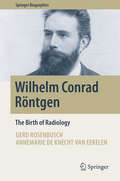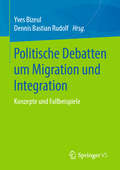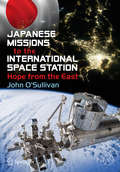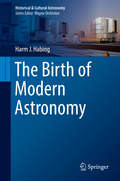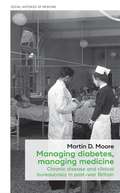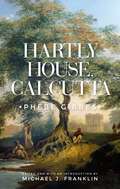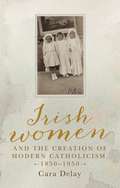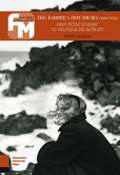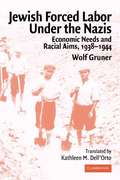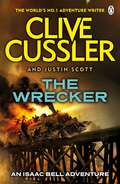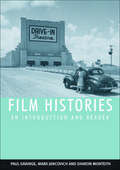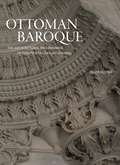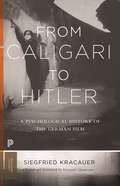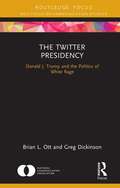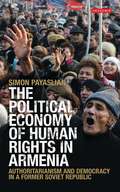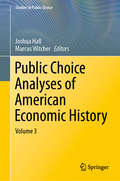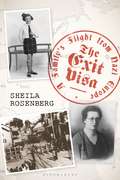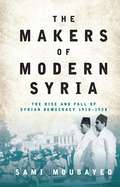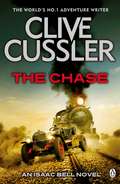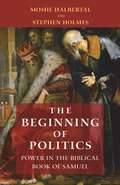- Table View
- List View
Itihas (C. 750-1206) BA (Hons) Sem-III -Ranchi University, N.P.U
by A. K. MittalItihas (C. 750-1206) Core Course-C 5 and Core Course-C 6 text book According to the Latest Syllabus based on Choice Based Credit System (CBCS) for B.A (Hons.) Sem-II from Ranchi University, Nilambar Pitambar University in hindi.
Wilhelm Conrad Röntgen: The Birth of Radiology (Springer Biographies)
by Gerd Rosenbusch Annemarie de Knecht-van EekelenThis book, which will appeal to all with an interest in the history of radiology and physics, casts new light on the life and career of Wilhelm Conrad Röntgen, showing how his personality was shaped by his youth in the Netherlands and his teachers in Switzerland. Beyond this, it explores the technical developments relevant to the birth of radiology in the late nineteenth century and examines the impact of the discovery of X-rays on a broad range of scientific research. Röntgen (1845-1923) was born in Lennep, Germany, but emigrated with his family to the Netherlands in 1848. As a 17-year-old he moved to Utrecht, entering the Technical School and living at the home of Dr. Jan Willem Gunning. In this well-educated family he was stimulated to continue his studies at university. In 1868 he received a diploma from the Federal Polytechnic School in Zurich and just a year later completed a PhD in physics. He followed his mentor, August Kundt, to the universities of Würzburg (1870) and Strasburg (1872) and married Anna Ludwig in 1872. In 1879 Röntgen gained his first professorship at a German University, in Giessen, followed by a chair in Würzburg in 1888. Here he discovered X-rays in 1895, for which he received the first Nobel Prize in physics in 1901. From 1900 until his retirement in 1921 he occupied the chair of physics at the Munich University.
Politische Debatten um Migration und Integration: Konzepte und Fallbeispiele
by Yves Bizeul Dennis Bastian RudolfDer Sammelband kombiniert die Diskussion theoretischer Konzepte mit länderübergreifenden Analysen zu Migration und Integration. Im Mittelpunkt stehen einerseits Fragen bezüglich der Grenzen klassischer Migrations- und Integrationstheorien bzw. Möglichkeiten für deren Erweiterung und andererseits empirische Fallbeispiele, welche nach den Ursachen und Folgen von Flucht- und Migrationsbewegungen fragen, den länderspezifischen Umgang mit Migration und Integration beleuchten sowie Lösungsansätze und aktuelle Migrations- und Integrationspolitiken diskutieren.
Japanese Missions to the International Space Station: Hope from the East (Springer Praxis Books)
by John O'SullivanJapan has a rich history of human spaceflight, flying in space with both NASA and the Soviet/Russian space agencies over the years. This book tells the story of the JAXA astronauts who have visited the International Space Station and how they have lived on board, helped construct the space laboratory and performed valuable scientific experiments.JAXA has contributed the largest single module to the ISS: the Kibō (Hope) science laboratory with its Logistics Module, Exposed Facility and robot arm. JAXA supplies the station with cargo and supplies on its automated cargo spacecraft, the H-II Transfer Vehicle (HTV), but it is the human endeavour that captures the imagination. From brief visits to six-month expeditions, from spacewalking to commanding the Earth’s only outpost in space, JAXA astronauts have played a vital role in the international project.Extensive use of colour photographs from NASA and JAXA depicting the experiments carried out and the phases of the ISS construction, together with the personal stories of the astronauts’ experiences in space, highlight the crucial part the Japanese have played in human spaceflight.
The Birth of Modern Astronomy (Historical & Cultural Astronomy)
by Harm J. HabingThis richly illustrated book discusses the ways in which astronomy expanded after 1945 from a modest discipline to a robust and modern science. It begins with an introduction to the state of astronomy in 1945 before recounting how in the following years, initial observations were made in hitherto unexplored ranges of wavelengths, such as X-radiation, infrared radiation and radio waves. These led to the serendipitous discovery of more than a dozen new phenomena, including quasars and neutron stars, that each triggered a new area of research.The book goes on to discuss how after 1985, the further, systematic exploration of the earlier discoveries led to long-term planning and the construction of new, large telescopes on Earth and in Space. Key scientific highlights described in the text are the detection of exoplanets (1995), the unexpected discovery of the accelerated expansion of the Universe (1999), a generally accepted model for the large-scale properties of the Universe (2003) and the ΛCDM theory (2005) that explains how the galaxies and stars of the present Universe were formed from minute irregularities in the (almost) homogenous gas that filled the early Universe.All these major scientific achievements came at a price, namely the need to introduce two new phenomena that are as yet unexplained by physics: inflation and dark energy. Probably the deepest unsolved question has to be: Why did all of this start with a Big Bang?
Managing diabetes, managing medicine: Chronic disease and clinical bureaucracy in post-war Britain (Social Histories of Medicine)
by Martin D. MooreThis book is available as an open access ebook under a CC-BY-NC-ND licence.Through its study of diabetes care in twentieth-century Britain, Managing diabetes, managing medicine offers the first historical monograph to explore how the decision-making and labour of medical professionals became subject to bureaucratic regulation and managerial oversight. Where much existing literature has cast health care management as either a political imposition or an assertion of medical control, this work positions managerial medicine as a co-constructed venture. Although driven by different motives, doctors, nurses, professional bodies, government agencies and international organisations were all integral to the creation of managerial systems, working within a context of considerable professional, political, technological, economic and cultural change.
Managing diabetes, managing medicine: Chronic disease and clinical bureaucracy in post-war Britain (Social Histories of Medicine)
by Martin D. MooreThis book is available as an open access ebook under a CC-BY-NC-ND licence.Through its study of diabetes care in twentieth-century Britain, Managing diabetes, managing medicine offers the first historical monograph to explore how the decision-making and labour of medical professionals became subject to bureaucratic regulation and managerial oversight. Where much existing literature has cast health care management as either a political imposition or an assertion of medical control, this work positions managerial medicine as a co-constructed venture. Although driven by different motives, doctors, nurses, professional bodies, government agencies and international organisations were all integral to the creation of managerial systems, working within a context of considerable professional, political, technological, economic and cultural change.
Hartly House, Calcutta: Phebe Gibbes
by Michael J. FranklinThis novel is a designedly political document. Written at the time of the Hastings impeachment and set in the period of Hastings’s Orientalist government, Hartly House, Calcutta (1789) represents a dramatic delineation of the Anglo-Indian encounter. The novel constitutes a significant intervention in the contemporary debate concerning the nature of Hastings’s rule of India by demonstrating that it was characterised by an atmosphere of intellectual sympathy and racial tolerance. Within a few decades the Evangelical and Anglicising lobbies frequently condemned Brahmans as devious beneficiaries of a parasitic priestcraft, but Phebe Gibbes’s portrayal of Sophia’s Brahman and the religion he espouses represent a perception of India dignified by a sympathetic and tolerant attempt to dispel prejudice.
Irish women and the creation of modern Catholicism, 1850–1950 (G - Reference, Information and Interdisciplinary Subjects)
by Cara DelayThis is the first book-length study to investigate the place of lay Catholic women in modern Irish history. It analyses the intersections of gender, class and religion by exploring the roles that middle-class, working-class and rural poor women played in the evolution of Irish Catholicism and thus the creation of modern Irish identities. The book demonstrates that in an age of Church growth and renewal, stretching from the aftermath of the Great Famine through the Free State years, lay women were essential to all aspects of Catholic devotional life, including both home-based religion and public rituals. It also reveals that women, by rejecting, negotiating and reworking Church dictates, complicated Church and clerical authority. Irish women and the creation of modern Catholicism re-evaluates the relationship between the institutional Church, the clergy and women, positioning lay Catholic women as central actors in the making of modern Ireland.
Eric Rohmer’s Film Theory (1948-1953): From ‘école Schérer’ to ‘Politique des auteurs’ (PDF)
by Marco GrosoliIn the 1950s, a group of critics writing for Cahiers du Cinéma launched one of the most successful and influential trends in the history of film criticism: auteur theory. Though these days it is frequently usually viewed as limited and a bit old-fashioned, a closer inspection of the hundreds of little-read articles by these critics reveals that the movement rested upon a much more layered and intriguing aesthetics of cinema. This book is a first step toward a serious reassessment of the mostly unspoken theoretical and aesthetic premises underlying auteur theory, built around a reconstruction of Eric Rohmer's early but decisive leadership of the group, whereby he laid down the foundations for the eventual emergence of their full-fledged auteurism.
Jewish Forced Labor Under the Nazis: Economic Needs and Racial Aims, 1938–1944 (PDF)
by Wolf GrunerForced labor was a key feature of Nazi anti-Jewish policy and shaped the daily life of almost every Jewish family in occupied Europe. This book systematically describes the implementation of forced labor for Jews in Germany, Austria, the Protectorate, and the various occupied Polish territories. As early as the end of 1938, compulsory labor for Jews had been introduced in Germany and annexed Austria by the labor administration. Similar programs subsequently were established by civil administrations in the German-occupied Czech and Polish territories. At its maximum extent, more than one million Jewish men and women toiled for private companies and public builders, many of them in hundreds of now often-forgotten special labor camps. This study refutes the widespread thesis that compulsory work was organized only by the SS, and that exploitation was only an intermediate tactic on the way to mass murder or, rather, that it was only a facet in the destruction of the Jews.
The Wrecker: Isaac Bell #2 (Isaac Bell #2)
by Justin Scott Clive CusslerPrivate detective Isaac Bell returns in Clive Cussler's The Wrecker.1907: train wrecks, fires, and explosions sabotage the Southern Pacific Railroad's new express line . . .The desperate railroad hires the fabled Van Dorn Detective Agency, who send their best man, Isaac Bell. He quickly discovers that a saboteur calling himself the Wrecker is attacking the Southern Pacific with accomplices recruited from down-and-outs - who are killed afterward. The Wrecker strikes wherever he pleases, causing untold damage and loss of human life. Who is he? What does he want? Is he an anarchist? A revolutionary? A criminal mastermind?Whoever he is, whatever his motives, the Wrecker knows how to create havoc. And Bell is convinced he is building up to a grand act unlike anything he has committed before. If the Wrecker isn't stopped in time, more than a railroad is at risk - the future of the entire country is on the line . . .Bestseller Clive Cussler - author of the Dirk Pitt novels Black Wind and Trojan Odyssey - and co-author Justin Scott pit legendary detective Isaac Bell against a mysterious murderer and railroad saboteur in the second novel of historical thriller series The Isaac Bell Adventures, The Wrecker. Praise for Clive Cussler: 'The guy I read' Tom Clancy'Cussler is hard to beat' Daily Mail
Film Histories: An Introduction and Reader
by Paul Grainge Mark Jancovich Sharon MonteithThe book is arranged chronologically, and each chapter contains an introduction by the editors on the key developments within the period, followed by a classic piece of historical research about that period. Various types of film history are undertaken in the articles, so that students can become familiar with different types of film historical research. For example, topics include the history of audiences; exhibition; marketing; censorship; aesthetic history; political history; and historical reception studies. The book is therefore designed to provide students with a narrative history spine while simultaneously introducing them to different approaches to the study and research of film history. Concentrating on the plurality of the ‘historical turn’ in film studies, this book demonstrates that film history is, and should be, about more than simply key films, directors and movements.
Ottoman Baroque: The Architectural Refashioning of Eighteenth-Century Istanbul
by Unver RustemA new approach to late Ottoman visual culture and its place in the worldWith its idiosyncratic yet unmistakable adaptation of European Baroque models, the eighteenth-century architecture of Istanbul has frequently been dismissed by modern observers as inauthentic and derivative, a view reflecting broader unease with notions of Western influence on Islamic cultures. In Ottoman Baroque—the first English-language book on the topic—Ünver Rüstem provides a compelling reassessment of this building style and shows how between 1740 and 1800 the Ottomans consciously coopted European forms to craft a new, politically charged, and globally resonant image for their empire’s capital.Rüstem reclaims the label “Ottoman Baroque” as a productive framework for exploring the connectedness of Istanbul’s eighteenth-century buildings to other traditions of the period. Using a wealth of primary sources, he demonstrates that this architecture was in its own day lauded by Ottomans and foreigners alike for its fresh, cosmopolitan effect. Purposefully and creatively assimilated, the style’s cross-cultural borrowings were combined with Byzantine references that asserted the Ottomans’ entitlement to the Classical artistic heritage of Europe. Such aesthetic rebranding was part of a larger endeavor to reaffirm the empire’s power at a time of intensified East-West contact, taking its boldest shape in a series of imperial mosques built across the city as landmarks of a state-sponsored idiom.Copiously illustrated and drawing on previously unpublished documents, Ottoman Baroque breaks new ground in our understanding of Islamic visual culture in the modern era and offers a persuasive counterpoint to Eurocentric accounts of global art history.
Ottoman Baroque: The Architectural Refashioning of Eighteenth-Century Istanbul
by Unver RustemA new approach to late Ottoman visual culture and its place in the worldWith its idiosyncratic yet unmistakable adaptation of European Baroque models, the eighteenth-century architecture of Istanbul has frequently been dismissed by modern observers as inauthentic and derivative, a view reflecting broader unease with notions of Western influence on Islamic cultures. In Ottoman Baroque—the first English-language book on the topic—Ünver Rüstem provides a compelling reassessment of this building style and shows how between 1740 and 1800 the Ottomans consciously coopted European forms to craft a new, politically charged, and globally resonant image for their empire’s capital.Rüstem reclaims the label “Ottoman Baroque” as a productive framework for exploring the connectedness of Istanbul’s eighteenth-century buildings to other traditions of the period. Using a wealth of primary sources, he demonstrates that this architecture was in its own day lauded by Ottomans and foreigners alike for its fresh, cosmopolitan effect. Purposefully and creatively assimilated, the style’s cross-cultural borrowings were combined with Byzantine references that asserted the Ottomans’ entitlement to the Classical artistic heritage of Europe. Such aesthetic rebranding was part of a larger endeavor to reaffirm the empire’s power at a time of intensified East-West contact, taking its boldest shape in a series of imperial mosques built across the city as landmarks of a state-sponsored idiom.Copiously illustrated and drawing on previously unpublished documents, Ottoman Baroque breaks new ground in our understanding of Islamic visual culture in the modern era and offers a persuasive counterpoint to Eurocentric accounts of global art history.
From Caligari to Hitler: A Psychological History of the German Film (Princeton Classic Editions Ser. #43)
by Siegfried KracauerAn essential work of the cinematic history of the Weimar Republic by a leading figure of film criticismFirst published in 1947, From Caligari to Hitler remains an undisputed landmark study of the rich cinematic history of the Weimar Republic. Prominent film critic Siegfried Kracauer examines German society from 1921 to 1933, in light of such movies as The Cabinet of Dr. Caligari, M, Metropolis, and The Blue Angel. He explores the connections among film aesthetics, the prevailing psychological state of Germans in the Weimar era, and the evolving social and political reality of the time. Kracauer makes a startling (and still controversial) claim: films as popular art provide insight into the unconscious motivations and fantasies of a nation.With a critical introduction by Leonardo Quaresima which provides context for Kracauer’s scholarship and his contributions to film studies, this Princeton Classics edition makes an influential work available to new generations of cinema enthusiasts.
From Caligari to Hitler: A Psychological History of the German Film
by Siegfried KracauerAn essential work of the cinematic history of the Weimar Republic by a leading figure of film criticismFirst published in 1947, From Caligari to Hitler remains an undisputed landmark study of the rich cinematic history of the Weimar Republic. Prominent film critic Siegfried Kracauer examines German society from 1921 to 1933, in light of such movies as The Cabinet of Dr. Caligari, M, Metropolis, and The Blue Angel. He explores the connections among film aesthetics, the prevailing psychological state of Germans in the Weimar era, and the evolving social and political reality of the time. Kracauer makes a startling (and still controversial) claim: films as popular art provide insight into the unconscious motivations and fantasies of a nation.With a critical introduction by Leonardo Quaresima which provides context for Kracauer’s scholarship and his contributions to film studies, this Princeton Classics edition makes an influential work available to new generations of cinema enthusiasts.
The Twitter Presidency: Donald J. Trump and the Politics of White Rage (NCA Focus On Communication Studies)
by Brian L. Ott Greg DickinsonThe Twitter Presidency explores the rhetorical style of President Donald J. Trump, attending to both his general manner of speaking as well as to his preferred modality. Trump’s manner, the authors argue, reflects an aesthetics of white rage, and it is rooted in authoritarianism, narcissism, and demagoguery. His preferred modality of speaking, namely through Twitter, effectively channels and transmits the affective dimensions of white rage by taking advantage of the platform’s defining characteristics, which include simplicity, impulsivity, and incivility. There is, then, a structural homology between Trump’s general communication practices and the specific platform (Twitter) he uses to communicate with his base. This commonality between communication practices and communication platform (manner and modality) struck a powerful emotive chord with his followers, who feel aggrieved at the decentering of white masculinity. In addition to charting the defining characteristics of Trump’s discourse, The Twitter Presidency exposes how Trump’s rhetorical style threatens democratic norms, principles, and institutions.
The Twitter Presidency: Donald J. Trump and the Politics of White Rage (NCA Focus On Communication Studies)
by Brian L. Ott Greg DickinsonThe Twitter Presidency explores the rhetorical style of President Donald J. Trump, attending to both his general manner of speaking as well as to his preferred modality. Trump’s manner, the authors argue, reflects an aesthetics of white rage, and it is rooted in authoritarianism, narcissism, and demagoguery. His preferred modality of speaking, namely through Twitter, effectively channels and transmits the affective dimensions of white rage by taking advantage of the platform’s defining characteristics, which include simplicity, impulsivity, and incivility. There is, then, a structural homology between Trump’s general communication practices and the specific platform (Twitter) he uses to communicate with his base. This commonality between communication practices and communication platform (manner and modality) struck a powerful emotive chord with his followers, who feel aggrieved at the decentering of white masculinity. In addition to charting the defining characteristics of Trump’s discourse, The Twitter Presidency exposes how Trump’s rhetorical style threatens democratic norms, principles, and institutions.
The Political Economy of Human Rights in Armenia: Authoritarianism and Democracy in a Former Soviet Republic
by Simon PayaslianSince its independence from the Soviet Union in 1991, Armenia has experienced a reversal from democratization to a Soviet-style authoritarian regime and has been accused of repressive approaches to human rights. Here, Simon Payaslian juxtaposes a masterful survey of the history of the Armenian people from the nineteenth century through the first republic (1918-21) and Sovietization to the present, with the evolution of international human rights standards, and argues that a statist and authoritarian political culture has impeded political liberalization and institutionalization of human rights principles. Highlighting the clash between sovereignty on one side and human rights and democracy on the other, this comprehensive and in-depth analysis is essential for all those interested in human rights, democratization, political repression and the former Soviet republics.
Public Choice Analyses of American Economic History: Volume 3 (Studies in Public Choice #39)
by Joshua Hall Marcus WitcherThis book is the third installment in a series of volumes looking at episodes in American economic history from a public choice perspective. Each chapter discusses citizens, special interests, and government officials responding to economic incentives in both markets and politics. In doing so, the book provides fresh insights into important periods of American history, from the Rhode Island’s 1788 Referendum on the U.S. Constitution and the political influence of women’s clubs in the United States. The volume features economic historians such as Ruth Wallis Herndon, junior public choice scholars such as Jayme Lemke and Leo Krasnozhon, and political scientists such as Michael Faber. This volume will be useful for researchers and students interested in economics, history, political science, economic history, public choice, and political economy.
The Exit Visa: A Family's Flight from Nazi Europe
by Sheila Rosenberg6th September, 1942: a middle-aged Jewish refugee stands on the Swiss side of the Franco-Swiss border above Geneva. He has been living in Switzerland since he fled Vienna in November 1938, as the Nazi persecution of the city's Jewish population intensified. He is now waiting for the arrival of the wife he has not seen for nearly four years. Against all odds he has managed to get an entry permit for her to join him in Switzerland. She appears on the French side. They see each other. Call out. She begins to cross the few yards of no-mans-land that separate them. An official calls her back. She hesitates, turns, goes back - and is lost forever. This book tells the story of the wartime journey of Toni Schiff, as she ventured across Europe to the this fateful near-meeting at the Franco-Swiss border – and what happened next. Based on the extensive research of her daughter, Kindertransportee Hilda Schiff, and told by Sheila Rosenberg, who shared much of the later research and many of the research journeys, this book sheds light on the lives of one family – caught up in, and ultimately separated by, the tragic and tumultuous events of World War II.
The Makers of Modern Syria: The Rise and Fall of Syrian Democracy 1918-1958 (Library Of Modern Middle East Studies #Vol. 200)
by Sami MoubayedIn the aftermath of World War I Syria paved a path towards democracy. Initially as part of the French mandate in the Middle East and latterly as an independent republic, Syria put in place the instruments of democratic government that it was hoped would lead to a stable future. This book tells the story of Syria's formative years, using previously-unseen material from the personal papers of Ahmad Sharabati, a prominent nationalist who served in different capacities during colonial times and early independence, first as minister of defense and then as minister of education. His experiences and those of others of his generation tell the story of Syria's short-lived democratic years, up to the union with Egypt as the United Arab Republic between 1958 and 1961.
The Chase: Isaac Bell #1 (Isaac Bell #1)
by Clive CusslerIn The Chase Clive Cussler introduces a historical hero- Isaac Bell. 1950: the rusting hulk of a steam locomotive is raised from the depths of a Montana lake. Inside are three bodies, bloody clue to a fortune lost for over forty years . . . 1906: For two years banks across the western United States have been living in terror of the 'Butcher Bandit'. This cold-blooded bank robber empties safes and murders all witnesses, vanishing without trace. In desperation, the US Government calls in Isaac Bell, the best detective in the country. From Arizona to Colorado to the streets of San Francisco during the great quake, Bell uses all his guile and ingenuity to catch up with the murderous Bandit. But when Bell has him almost cornered - the Bandit turns really nasty. And suddenly the stakes have changed. Bell isn't just battling to get his man. He's fighting for his very survival . . .Bestseller Clive Cussler - author of the Dirk Pitt novels Arctic Drift and Crescent Dawn - sends hero Isaac Bell to solve a mysterious series of bank-robberies and murders in the first novel of historical thriller series The Isaac Bell Adventures. The Chase is followed by The Wrecker and The Spy. Praise for Clive Cussler:'Delivers what it promises' Financial Times'The guy I read' Tom Clancy
The Beginning of Politics: Power in the Biblical Book of Samuel
by Stephen Holmes Moshe HalbertalNew insights into how the Book of Samuel offers a timeless meditation on the dilemmas of statecraftThe Book of Samuel is universally acknowledged as one of the supreme achievements of biblical literature. Yet the book's anonymous author was more than an inspired storyteller. The author was also an uncannily astute observer of political life and the moral compromises and contradictions that the struggle for power inevitably entails. The Beginning of Politics mines the story of Israel's first two kings to unearth a natural history of power, providing a forceful new reading of what is arguably the first and greatest work of Western political thought.Moshe Halbertal and Stephen Holmes show how the beautifully crafted narratives of Saul and David cut to the core of politics, exploring themes that resonate wherever political power is at stake. Through stories such as Saul's madness, David's murder of Uriah, the rape of Tamar, and the rebellion of Absalom, the book's author deepens our understanding not only of the necessity of sovereign rule but also of its costs—to the people it is intended to protect and to those who wield it. What emerges from the meticulous analysis of these narratives includes such themes as the corrosive grip of power on those who hold and compete for power; the ways in which political violence unleashed by the sovereign on his own subjects is rooted in the paranoia of the isolated ruler and the deniability fostered by hierarchical action through proxies; and the intensity with which the tragic conflict between political loyalty and family loyalty explodes when the ruler's bloodline is made into the guarantor of the all-important continuity of sovereign power.The Beginning of Politics is a timely meditation on the dark side of sovereign power and the enduring dilemmas of statecraft.

